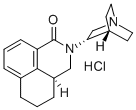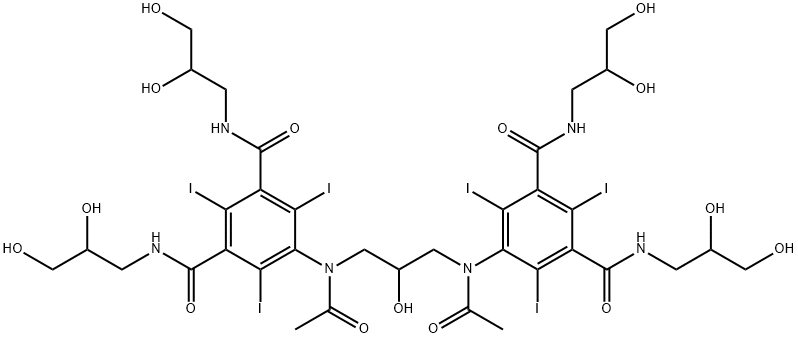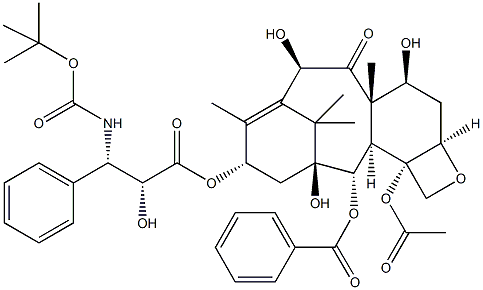PalonosetronHCl , 10mMinWater , 135729-62-3
CAS NO.:135729-62-3
Empirical Formula: C19H25ClN2O
Molecular Weight: 332.87
MDL number: MFCD07370072
EINECS: 680-630-6
| Pack Size | Price | Stock | Quantity |
| 1ml | RMB159.20 | In Stock |
|
| others | Enquire |
PRODUCT Properties
| Melting point: | >290°C |
| alpha | D25 -94.1° (c = 0.4 in water) |
| storage temp. | Inert atmosphere,Store in freezer, under -20°C |
| solubility | Methanol (Slightly, Heated), Water (Slightly) |
| form | Solid |
| color | White to Off-White |
| optical activity | [α]/D -90 to -110°, c =0.4 in H2O |
| Water Solubility | H2O: 20mg/mL, clear |
| Merck | 14,6997 |
| InChI | InChI=1/C19H24N2O.ClH/c22-19-16-6-2-4-14-3-1-5-15(18(14)16)11-21(19)17-12-20-9-7-13(17)8-10-20;/h2,4,6,13,15,17H,1,3,5,7-12H2;1H/t15-,17-;/s3 |
| InChIKey | OLDRWYVIKMSFFB-HYCRUXCXNA-N |
| SMILES | N1(C[C@@]2([H])CCCC3=CC=CC(=C32)C1=O)[C@H]1[C@]2([H])CCN(CC2)C1.Cl |&1:2,15,16,r| |
| CAS DataBase Reference | 135729-62-3(CAS DataBase Reference) |
Description and Uses
Palonosetron is a novel 5-HT3 receptor antagonist launched as an injectable agent for the prevention of acute and delayed nausea and vomiting associated with cancer chemotherapy. It has a much longer half-life (~ 40 h) than the other currently available 5-HT3 antagonists, which provides efficacy advantages in the prevention of delayed nausea and vomiting that typically occurs after 24 h and up to six days post chemotherapy administration. Palonosetron was developed as a conformationally restricted analog of the previously known 5HT3 antagonists tropisetron and granisetron. It is synthesized in four steps starting with the condensation of 1,8- naphthalic anhydride and (S)-3-aminoquinuclidine to produce the corresponding imide. The subsequent steps include catalytic hydrogenation of one of the aromatic rings of the imide intermediate, selective reduction of one of the carbonyls to a hydroxyl group, dehydration to an olefin and catalytic hydrogenation. The recommended dosage of palonosteron is 0.25 mg, administered as a single intravenous dose approximately 30 min before the start of chemotherapy. Palonosetron exhibits dose-proportional pharmacokinetics and it is moderately bound to plasma proteins (62%). Fifty percent of the dose is metabolized in the liver, and 40% is excreted unchanged in the urine. In comparative clinical studies with two other 5- HT3 receptor antagonists, palonosetron is shown to be as effective as dolasetron and more effective than ondansetron in controlling acute nausea and vomiting and superior to both in the control of delayed nausea and vomiting. Efficacy of palonosetron has been demonstrated in patients receiving initial and repeat courses of both moderately and highly emetogenic chemotherapy, including cisplatin, cyclophosphamide and dacarbazine. At 0.25 and 0.75 mg doses, palonosetron is well tolerated and the most occurring adverse events are headache, diarrhea, fatigue, abdominal pain and insomnia.
(S,S)-Palonosetron Hydrochloride is a serotonin 5-HT3 receptor antagonist used in the prevention and treatment of chemotherapy-induced nausea and vomiting (CINV). Antiemetic.
Safety
| Symbol(GHS) |  GHS07 |
| Signal word | Warning |
| Hazard statements | H332-H302-H312 |
| Precautionary statements | P264-P270-P301+P312-P330-P501-P280-P302+P352-P312-P322-P363-P501-P261-P271-P304+P340-P312 |
| HS Code | 29339900 |





